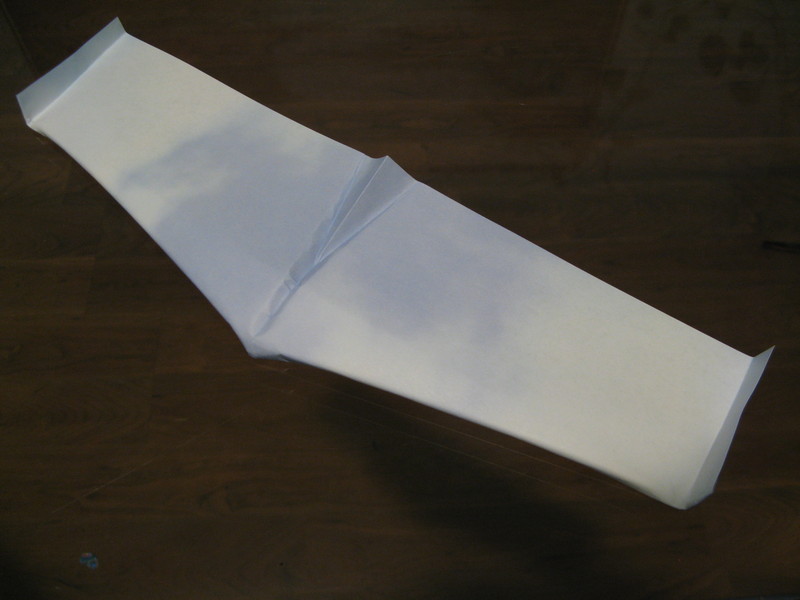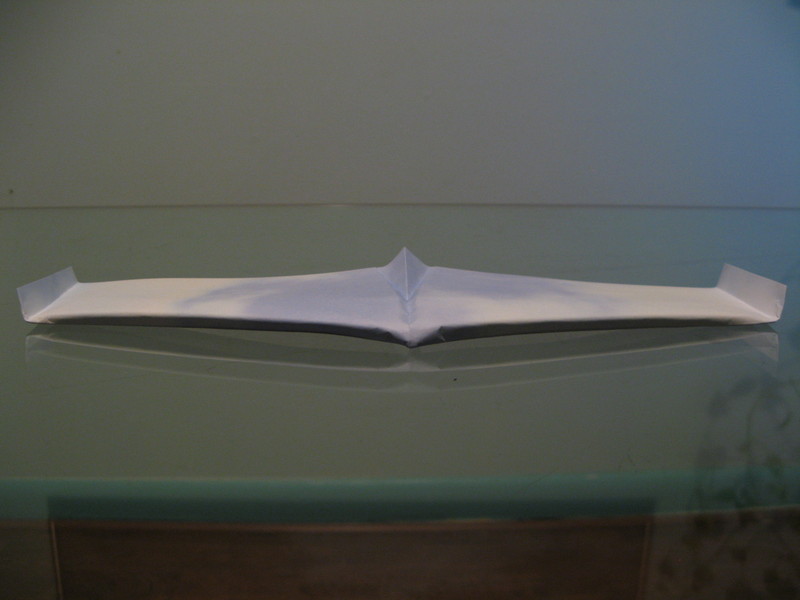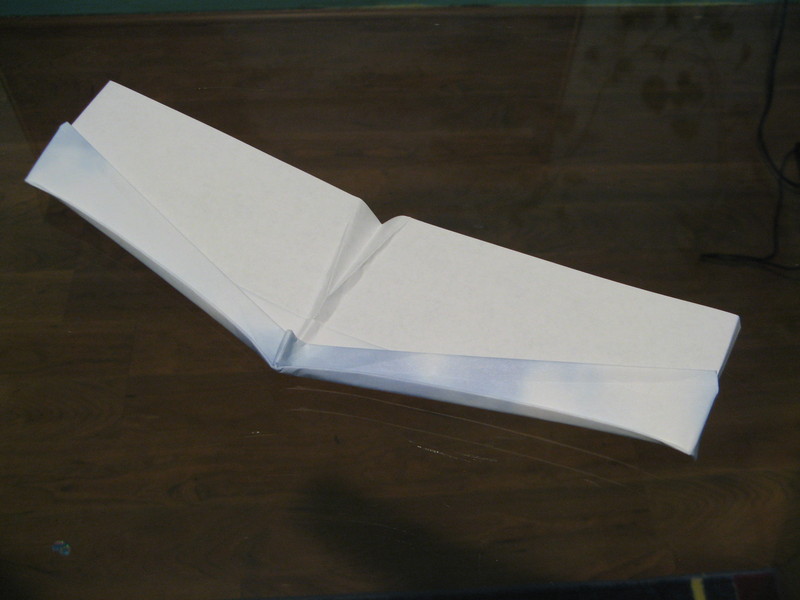Wing Plane
|
 |
| Property | ----|----| |
|---|
| | Difficulty |
______] |
| Wingspan |
___________] |
| Longitudinal moment of inertia |
_________] |
| Stability |
__] |
| Maybe just add this to the Arrow or any other dart-like aircraft to complete the package.
|
Folding instructions:
- dashed lines indicate valley folds
- solid lines indicate mountain folds
- congruent angles are indicated
|
-

-

- This flying wing manages to look rather "wing-like" and uses a number of
techniques to maximize its lift-to-drag ratio and establish a good glide
slope. With a tiny fuselage, almost the entire length of the paper is
preserved as the final wingspan. The curvature of the wing along the
chord creates a smooth airfoil shape over the top of the wing surface,
provides rigidity along the span of the wing through the fuselage, and
leverages the patented Kline-Fogelman airfoil underneath. With almost no
dihedral or empennage, stability is provided by a combination of
slightly swept wings and a decreasing angle of attack from the wing root
to the wingtip. The small winglets reduce the size and effect of the
wingtip vortices, and also increase rigidity by creating internal
stresses as their folds intersect the curved airfoil.
The main problem with this design will likely be its inability to
sustain the high airspeed necessary to chuck it very high above the
ground before it begins its glide. As with most of my designs, the basic
folding pattern for this design was stumbled upon quite by accident --
this time as I attempted to recall the instructions for Ken Blackburn's
world record glider to use as a baseline for comparisons.
Email me for motivation to post detailed folding instructions

Rowin Andruscavage
Last modified: Tue Dec 20 12:08:16 PST 2016






